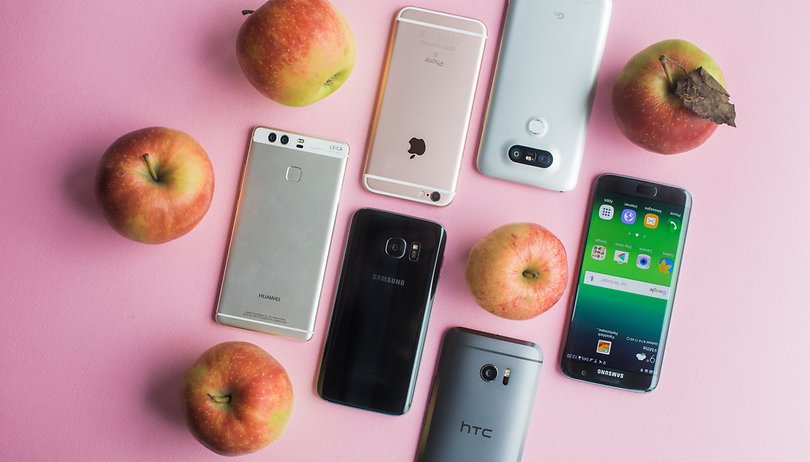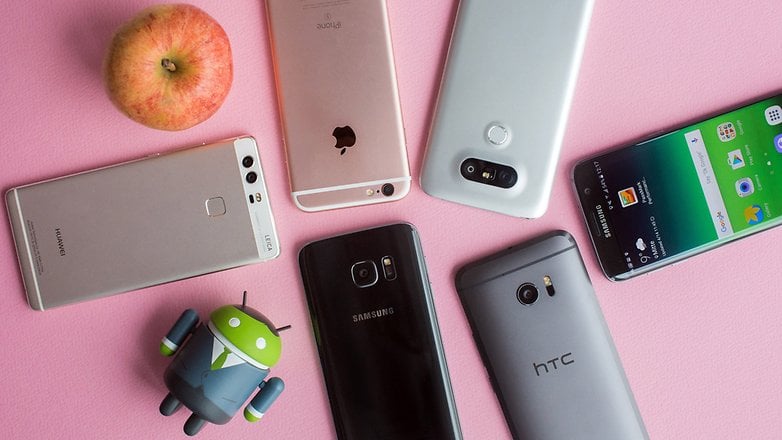3 reasons why 5 years of software updates may not work on Android


After the announcement of iPhones that will be compatible with iOS 15 and the news of the iPhone 6S receiving yet another year of software updates, we decided to hunt down Android smartphones that were released around the same time window and realized something: long-term software support concerning Google's mobile operating system is simply an unrealistic expectation.
Don't get me wrong, extended software support is one of the things I appreciate most about Apple's devices - the iPad Air 2 that was released all the way back in 2014 will receive iPadOS 15 later this year. Since I was challenged to think about what would it take for the same thing to happen within the Android ecosystem, I've sorted out some points after consulting with my colleagues.
Ah, there is, of course, the ecological point of view, where making sure that a device is able to last for as long as possible is better for mankind as well as Mother Nature, but this is not the point of the article. Fortunately in this regard, there is FairPhone for the Android ecosystem of which I will mention later.

Reason #1: Cost
The main problem is probably cost: developing, testing, and distributing version updates is a costly affair and requires coordination not only from the manufacturer itself but also from component and operating system vendors.
The problem multiplies when you take into consideration the sheer size of product lines and myriad of possible combinations in the Android ecosystem. We do not have exact numbers to call out the amount required to support such an endeavor, but it is good to remember that Xiaomi announced more phones in a single week than Apple in the whole of 2020...
One has to know that the cost has already been included in the price that one forks out for an iPhone, as the customer does expect this degree of extended support from Apple. To balance things out on the Android front, a longer time frame for software support when it comes to Android smartphones would eventually result in a price hike. For markets with such slim profit margins like smartphones, it seems unrealistic to expect any manufacturer to offer a comprehensive software update program for its entire range and bearing all of the costs on its own.
Moreover, it would require people to understand the value of extended support and not just for power users only, even if purchasing a flagship smartphone is accompanied by the expectation of a longer length of software support and major updates compared to a basic device. And this brings us to our second point.

Reason #2: Devaluation
Perhaps driven by the dreaded idea of programmed obsolescence, Android smartphone manufacturers don't have the same incentive to keep offering updates for devices for too long in the market - except for a rare few who offer guaranteed extended support.
Apart from being more affordable than their Apple counterparts, Android devices end up depreciating faster, which also raises questions of cause and effect in the chicken-and-egg vein. Not only does resale value plummet, but so does the market value.
A reflection of this (or a consequence, perhaps?) is the frantic strategy of new device launches, where some cases see bi-annual updates, which further exacerbates the problem cited in the first point.
In addition, what works against the Android ecosystem is the perceived value of the Apple logo, allowing those devices to maintain their pricing for a far longer period of time which in turn leads to better profit margins. This is different from the vicious cycle that Android manufacturers face, where it does not make sense to invest money and manpower to work on updates for a longer period on devices that do not maintain their market value.

Reason #3: Outdated hardware and drivers
Another major advantage that Apple and its products have is the greater degree of control over the components used in its devices, including the SoCs and even part of the cores - such as the CPU which is based on ARM architecture and a GPU derived from the British PowerVR.
In addition to lowering production costs, the company is not tied down to its suppliers, as shown by the recent case of the FairPhone 2, which was released just before the iPhone 6S in 2015 and is finally receiving Android 9 in 2021.
The modular smartphone's update is the result of the company working with the community to get around the lack of support from its chipset manufacturer Qualcomm, who dropped the necessary updates for the Snapdragon 801 that powers the FairPhone 2 a long time ago.
For Android devices to receive additional version updates, it will require component manufacturers such as Qualcomm, MediaTek, Samsung, and others to extend the support time of their processors, not to mention taking into account the suppliers of sensors and other components used.
There are many versions to take into consideration and Google promises to solve this with Project Treble, which will reduce the importance of suppliers in the update process. However, despite advances from manufacturers, we're still far from the promise of fast (and long-term) updates on Android.
And despite Apple's advantage, the long-term support was indirectly responsible for what might perceive as a negative effect (depending on one's point of view): by offering longer update support for older devices, this would also mean reducing the performance potential of selected models to the much talked about #batterygate issue. Hence, it is not unrealistic to think that similar concerns would also end up also among selected Android models.
Ultimately, the biggest challenge for us to be able to enjoy longer-term updates on an Android handset really seems to be a financial one. Until consumers make it clear and vote with their pockets that they value long-term support - by boycotting companies that offer poor after-sales support, for instance, manufacturers and component suppliers will have no incentive to change the way they are working right now. At least FairPhone's stubbornness and Samsung's commitment to software updates indicate that all is not lost - for now.



















thanks for sharing
Devaluation isn't a reason. the price of a phone on the used market doesn't impact the company in supporting the device. And even if it's low value, there are many services repurposing these phones into communities of need. The demand for a supported updated phone is just as valuable in company image, good will and consumer experience as the new market. The cost of development is just now advertising for future customers.
The driver issue would hinge on the above argument. The Maker continues to need updated drivers for their updates. If the Maker has the demand, the device suppliers would be foolish to ignore it.
But this feeds into my arguments for needing open hardware in this market. Even if the modem drivers were open sourced after three years, the community and phone Makers would take care of the rest.